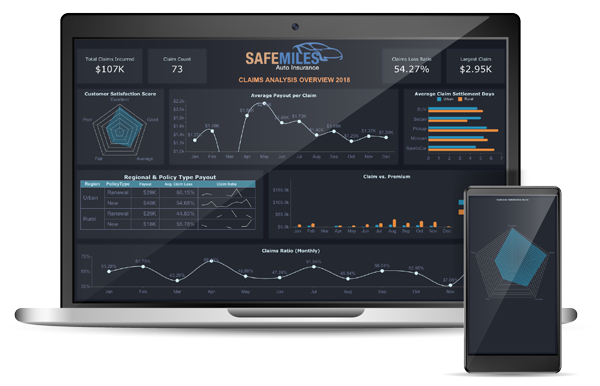The modern-day Chief Information Officer (CIO) is stuck in a vulnerable position. They're tasked with the essential yet brutal responsibility of leading information technology (IT) initiatives to meet organization objectives but often have to do so without the proper resources at their disposal.
Whether it's an inconsistent budget, trouble retaining their team members, or needing more IT management tools to do the job, CIOs are challenged with trying to meet unrealistic expectations without everything they need. The most notable roadblock, however, is making critical decisions to optimize IT resources without the right information at their disposal.
There lies another issue: Many CIOs aren't leveraging easy-to-use business intelligence (BI) platforms that can visually present actionable insights that improve IT monitoring and decision-making. Luckily, we're here to tell you how self-service BI tools can give your CIO a single source of truth to optimize IT resources. Here are our top 5 ways:
- Gives CIOs a Central View of IT Systems
- Provides Automated Alerts
- Helps Reduce Wasted IT Costs
- Allows CIOs to Spot Improvement Opportunities
- Lets CIOs Proactively Identify IT Issues
1. Gives CIOs a Central View of IT Systems
First and foremost is the benefit of data centralization. Visibility is often tricky in IT and cybersecurity management because countless devices, applications, and users exist on a single network. While plenty of different tools can monitor activity and usage for these network resources, they'll be scattered throughout various interfaces.
BI tools consolidate data sources into one system to give CIOs a holistic view. You can get a single source of truth from the integrated BI platform rather than navigating computer tabs and web apps to find the information needed for that next big decision.
2. Provides Automated Alerts
Without manually tracking server capacity, potentially threatening network activity, or if an application isn't performing correctly, how would you know which areas need immediate attention? This approach of having a CIO sit on their computer to monitor the network would be absurd.
Automation is far more practical for uncovering notable events. One of the most valuable features of BI tools is the alerts and notifications. By integrating with server monitoring tools, asset management platforms, and other systems collecting and tracking IT data, CIOs set threshold-based notifications --- allowing them to spend time on more strategic technology initiatives while swiftly remediating any alerted issues.
3. Helps Reduce Wasted IT Costs
It's always a win for the business anytime a CIO can cut IT costs without compromising operational production, customer satisfaction, revenue generation, brand image, etc. So how exactly do you discover opportunities to reduce those costs?
Most people think of a BI tool as only something that spots trends, and rightfully so. You can take data from your applications, servers, and other network components to uncover intelligence you wouldn't have found otherwise. There may be a software tool you're paying for that isn't fully adopted by your users or an unused cloud storage capacity that you can put on the chopping block to open up budget space.
4. Allows CIOs to Spot Improvement Opportunities
Similarly to cutting expenses, CIOs also receive praise for finding profitable and production-enhancing opportunities. Perhaps, for example, there's a specific category of IT tickets flooding your support teams that could get fixed with a simple patch or automation tool. Maybe a server isn't using your anticipated workload amount, and you can start running new applications on it. Perhaps it's now more cost-effective to move resources to a cloud or hybrid environment.
Regardless of the particular opportunity, a BI platform is what can identify those essential findings. With BI tools, CIOs can independently receive insights AND create and share ad-hoc visual reports that support their argument to other key decision-makers.
5. Lets CIOs Proactive Identify IT Issues
The break-fix approach to IT management gets time-consuming, expensive, and could lead to more substantial issues down the road. Suppose you can anticipate a server approaching capacity, software experiencing performance issues, or an incoming cybersecurity threat before they develop. In that case, you can proactively fix the problem so it doesn't evolve into something more.
BI tools give CIOs real-time alerts on their entire infrastructure and technology stack. The visual dashboards and threshold-based notifications allow CIOs to shift their operation into a managed services model, focusing on problem-solving before technical issues can impact the business.
Final Thoughts
BI tools serve as a catalyst for optimizing IT resources. Whether improving network and activity visibility, receiving automated emergency alerts, or discovering insights that could improve your bottom line, IT leaders should fully embrace self-service BI platforms.
Incase you missed the first and second part of this blog series, click below!
The Impact of Business Intelligence on IT: Part 1, Freeing IT Resources
The Impact of Business Intelligence on IT: Part 2, Reducing Data Requests





























